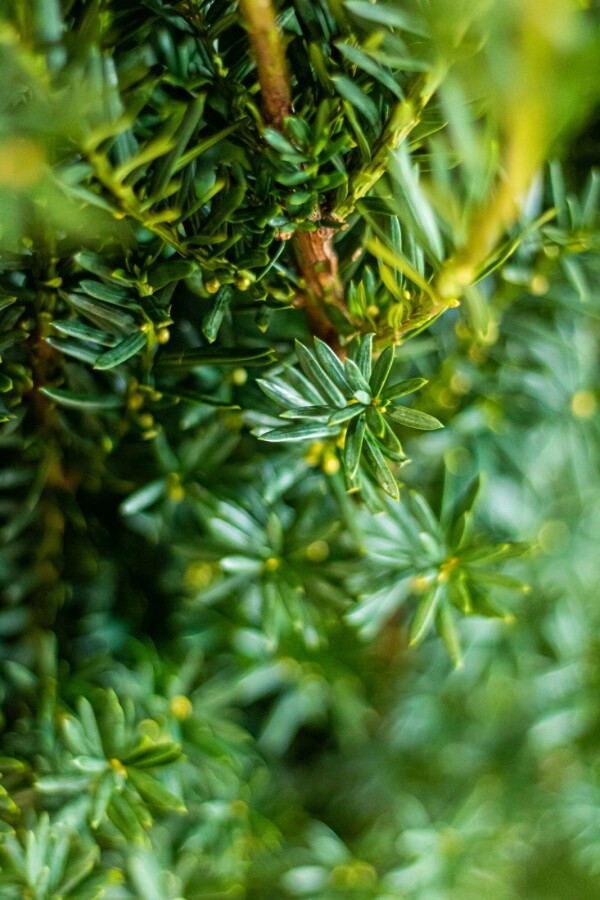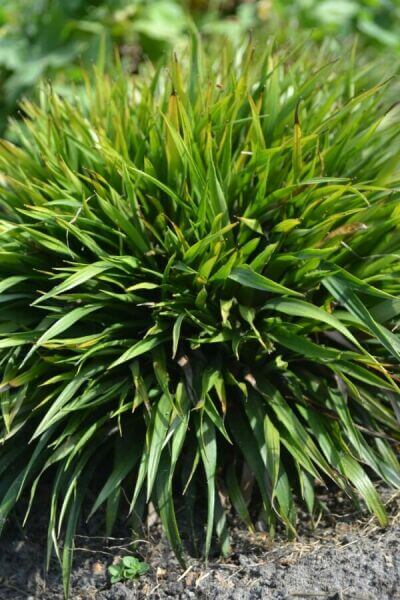Hedge Plants For Patio Edges
Hedge Plants For Patio Edges
Blog Article
Hedge Plants For Heat Tolerance
Enhance your garden's appeal with lush hedge ranges such as Yew (Taxus), Thuja, Laurel, Photinia, and Bamboo, celebrated for their structural stability and environmental benefits.
Yew and Thuja offer evergreen protection and winter resilience, while Laurel offers rapid growth and broad, aromatic leaves.
Photinia includes seasonal beauty with its dynamic red foliage, and Bamboo provides a low-maintenance, serene atmosphere.
These hedges enhance air quality, lower noise, and develop tranquil, personal areas.
Correct planting, spacing, and maintenance make sure energetic development and eco-friendly harmony.
Explore how these lush ranges can elevate your garden's beauty and well-being.
Key Takeaways
Change Your Garden With Lush Hedge Ranges
- Select Yew for its thick, evergreen growth and exceptional durability.
- Go with Laurel for its quick growth and broad leaves, ensuring quick privacy.
- Select Photinia for its lively seasonal foliage, which turns a striking dark red.
- Make use of Bamboo for a low-maintenance, winter-hardy hedge with visual appeal.
- Area plants 2-3 per meter and prune frequently for optimal growth and health.
Popular Hedge Plants
When transforming a garden with lush hedge varieties, it's important to consider popular hedge plants such as Yew, Thuja, Laurel, and Photinia due to their distinct qualities and advantages.
Yew (Taxus) is extremely respected for its durability and thick, green development, making it a prime option for sustaining landscapes.
Thuja is kept in mind for its evergreen foliage and robust winter season strength.
Photinia includes seasonal vibrancy with red leaves that darken gradually, producing dynamic visual appeal.
Laurel provides rapid growth and aromatic, broad leaves, perfect for quick privacy.
Additionally, Bamboo is an outstanding option for atmosphere, using a low-maintenance, winter-hardy alternative that improves the garden's aesthetic with its stylish, swaying canes.
These choices deal with a range of horticultural needs and choices.
Advantages of Garden Hedges
Garden hedges provide a wide range of benefits, making them an important addition to any landscape. These natural barriers are economical to execute and provide substantial wind security, enhancing air blood circulation and adding to noise decrease. The dense foliage of hedges like Thuja and Beech ensures personal privacy by obstructing presence, producing a serene and remote environment.
Hedges likewise play a vital function in microclimate guideline, supplying a steady environment that promotes plant development and lessens temperature level changes. Their elaborate leaf structures filter contaminants, enhancing air quality and contributing to a much healthier garden environment.
Moreover, hedges master noise reduction, taking in and deflecting acoustic waves to lower ambient sound levels. This dual performance of providing both visual and acoustic personal privacy enhances the general tranquility and aesthetic appeal of any garden.
Planting and Maintenance Tips
For a successful hedge, meticulous preparation of the planting area is important. Guarantee the soil has proper pH and drain to support strong root development.
Space the plants properly for the selected species. Water the hedge frequently throughout its initial growth phase, adjusting as needed with seasonal changes.
Implement a systematic bug control and disease avoidance strategy, utilizing natural or chemical treatments when necessary. Frequently examine for aphids, mites, and fungal infections.
Apply mulch to maintain wetness and reduce weeds. Seasonal pruning promotes thick growth and air flow, essential for plant health.
Following these guidelines will help you cultivate a lively, properly maintained hedge that improves the charm of your garden.
Spacing and Cutting Standards
Spacing and Trimming Guidelines
Correct spacing and trimming are crucial for cultivating healthy, aesthetically appealing hedges. Appropriate spacing ensures each plant receives enough nutrients, light, and airflow.
Follow these guidelines for optimal hedge maintenance:
- Spacing: Position hedge plants 2-3 plants per meter to encourage robust growth.
- Pruning Techniques: Routine pruning is necessary for maintaining preferred hedge height and shape. Trim new growth in summer and cut back older wood throughout winter season.
- Seasonal Care: Change cutting techniques and schedules according to seasonal requirements to guarantee plant health.
- Hedge Height: Regularly monitor and trim to maintain the desired hedge height and attain consistent aesthetic appeals.
Sticking to these actions will ensure your hedge grows, enhancing both the appeal and functionality of your garden.
Picking the Right Hedge
Selecting the Right Hedge
Selecting the proper hedge involves examining aspects such as fully grown height, foliage density, and environmental strength. Effective hedge plant choice needs understanding each types' development qualities and site-specific adaptability.
For instance, Yew (Taxus) provides excellent durability and dense Browse around this site development, while Thuja is notable for its winter season resilience. Furthermore, considering upkeep requirements is important; fast-growing species like Laurel or Privet demand regular cutting, whereas low-maintenance alternatives like Bamboo or Ivy might be more effective for those looking for minimal upkeep.
Ecological elements such as soil type, light availability, and wetness conditions ought to likewise guide the choice procedure. This careful technique ensures the selected hedges will grow, offering both visual and functional advantages to the garden landscape.
Delivery and Planting Advice
To ensure your hedge plants prosper, they need to be delivered by specialized carriers and planted promptly upon arrival.
Follow these important actions for effective planting:
- Soil Preparation: Enrich the soil with raw material to enhance drain and nutrient material.
- Planting Depth: Create a trench twice the width and equal to the depth of the root ball.
- Watering Methods: Water completely after planting, keeping the soil consistently damp but not filled.
- Mulching: Apply a layer of mulch to keep wetness and reduce weeds.
Client Assistance and Service
Offered the crucial role of timely help in horticultural pursuits, our client support group is readily available 6 days a week through telephone, e-mail, and social networks to use expert guidance and swiftly deal with any concerns. Their commitment to quick reaction times guarantees client complete satisfaction by fixing inquiries related to plant health, ideal planting approaches, and upkeep schedules.

Action Time
----------------------
Six days a week
Email
This comprehensive support group, reinforced by an excellent 9.3/ 10 consumer rating, highlights our dedication to boosting the gardening experience for every client.
Regularly Asked Questions
How Long Does It Consider Hedge Plants to Establish?
Hedge plants generally need one to three years to end up being fully developed, with the exact duration differing by species and growing conditions.
Effective care throughout this vital period is vital for robust growth. Constant watering, watchful weed control, and proper fertilizer application are critical in promoting strong root advancement.
For example, fast-growing types like Laurel might establish more rapidly, while slower-growing ranges such as Yew might take longer. Persistent upkeep speeds up the establishment procedure, leading to healthy and thick hedges.
What Are the very best Hedge Plants for Personal Privacy?
The concern of the best hedge plants for privacy involves examining evergreen and deciduous options.
Evergreen hedges like Thuja, Laurel, and Cypress supply year-round protection, ensuring continuous personal privacy.
In contrast, deciduous hedges such as Beech offer seasonal privacy, shedding leaves in chillier months.
Secret upkeep suggestions for personal privacy hedges include routine trimming, fertilizing in spring, and appropriate spacing-- generally 2 to 3 plants per meter.
In addition, constant watering and thorough weed removal are important for promoting healthy, thick growth.
Can Hedge Plants Draw In Wildlife to My Garden?
Yes, hedge plants can bring in wildlife to your garden by offering important benefits like shelter, food, and nesting websites, thus improving regional biodiversity. Yew, holly, and laurel are outstanding for attracting birds, while ivy supports a range of insects.
However, it's important to keep in mind that there are some downsides, such as increased upkeep to handle bugs and regular maintenance. Thoroughly selecting and keeping hedge ranges can assist balance these drawbacks and advantages, eventually fostering a sustainable and lively environment in your garden.
Exist Any Flowering Hedge Plants Available?
Yes, there are flowering hedge plants readily available that can enhance the appeal of your garden.
For example, Elaeagnus, likewise referred to as Olive Willow, produces fragrant white flowers in the fall, adding a touch of beauty.
Photinia, another popular choice, showcases vibrant red leaves that mature into a rich green, producing a dynamic visual effect throughout the seasons.
To make sure these plants grow, it's necessary to practice appropriate pruning strategies and seasonal maintenance, such as trimming brand-new growth in the summer season and cutting down in the winter.
These procedures will assist preserve the health and visual appeal of your flowering hedges.
How Do I Prevent Bugs in My Hedge Plants?
To prevent pests in hedge plants, use natural bug control approaches and preserve correct hedge care. Present advantageous insects like ladybugs, which prey on damaging pests, to develop a balanced community.
Regularly inspect your hedges for indications of infestation and promptly get rid of any afflicted parts to prevent the spread. Ensure the health of your hedges by using balanced fertilizers and supplying sufficient water.
Utilize mulching to keep soil wetness and correct spacing to reduce plant stress and promote robust development. These practices jointly help in minimizing insect problems and preserving a healthy hedge.
Conclusion
In essence, selecting the best hedge varieties such as Yew, Thuja, and Laurel can transform any garden into a relaxing haven. These plants offer year-round plant, boost visual appeal, and offer useful benefits like noise decrease and wind protection.
Proper planting strategies, accurate spacing, consistent watering, and seasonal cutting are important for ideal development.
Dependable shipment services and professional consumer support ensure a seamless experience from purchase to planting, making it easier than ever to raise your outside area.
Garden hedges provide a wide variety of advantages, making them a valuable addition to any landscape. These natural barriers are cost-efficient to carry out and offer significant wind protection, improving air blood circulation and contributing to sound decrease. The thick foliage of hedges like Thuja and Beech makes sure personal privacy by obstructing visibility, producing a peaceful and remote environment.

Pruning Strategies: Routine pruning is necessary for preserving preferred hedge height and shape. Cut brand-new development in summertime and cut back older wood during winter season.
Report this page